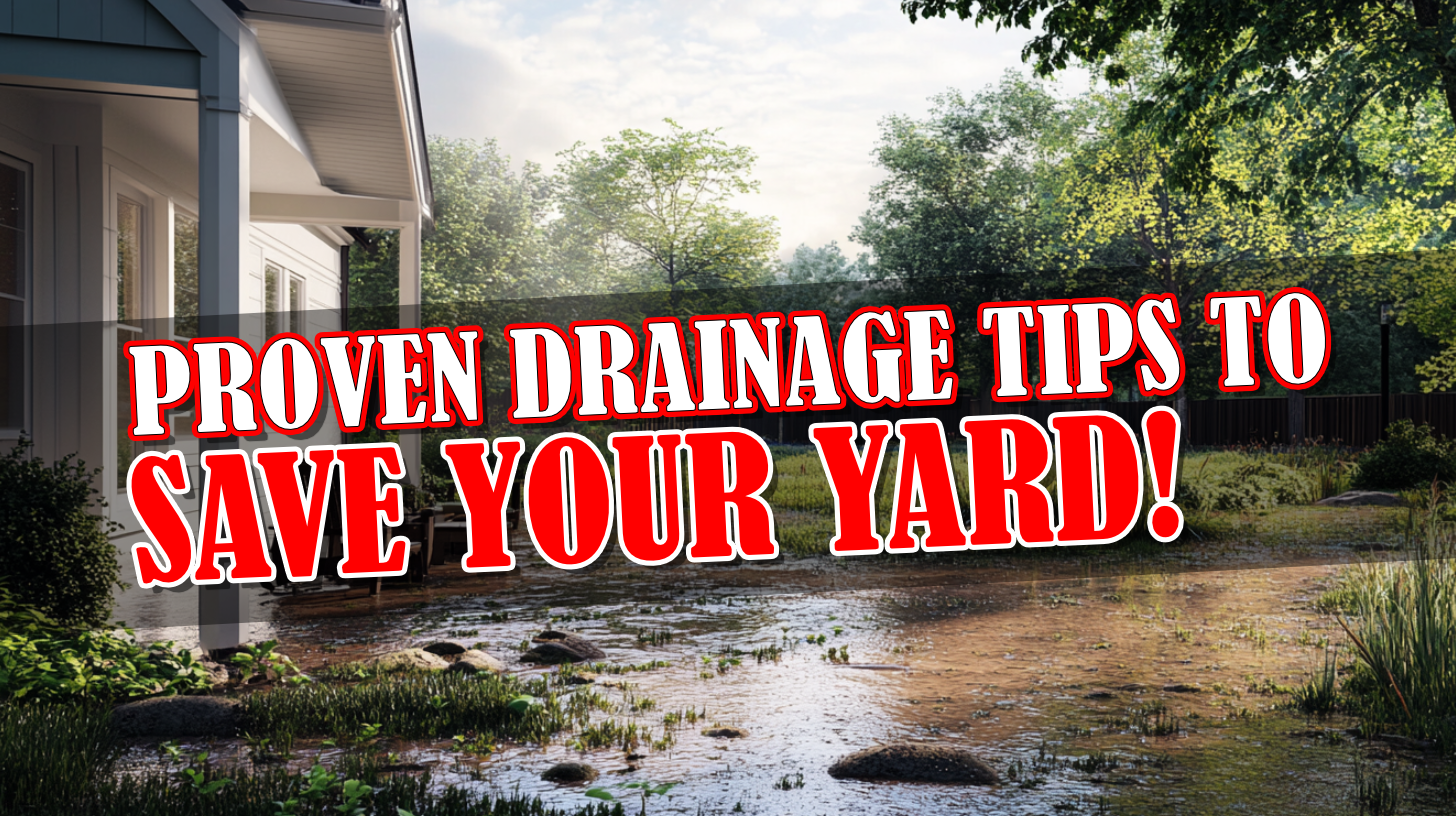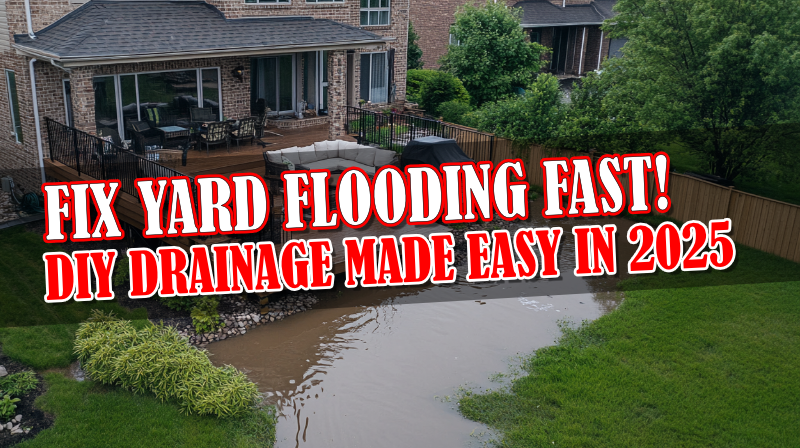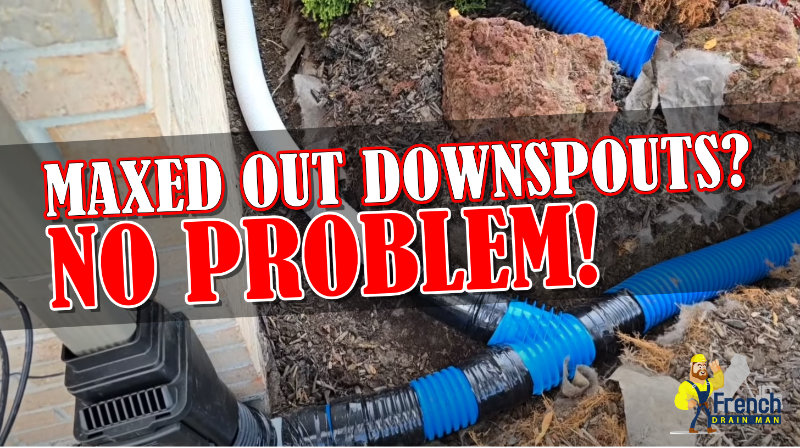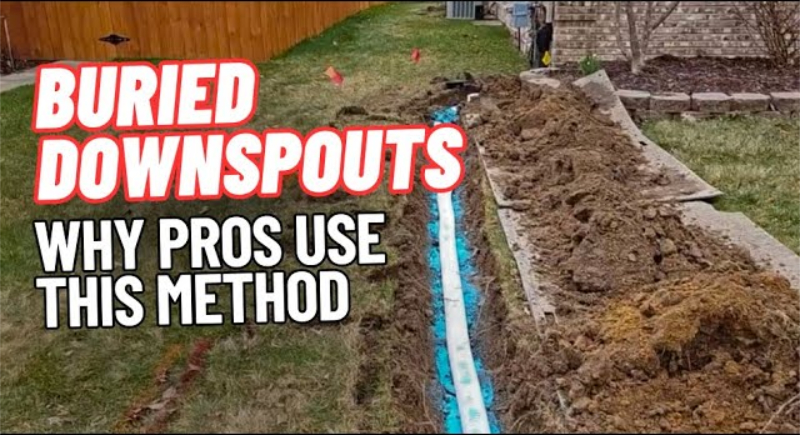What are the advantages to running downspouts underground in Michigan?
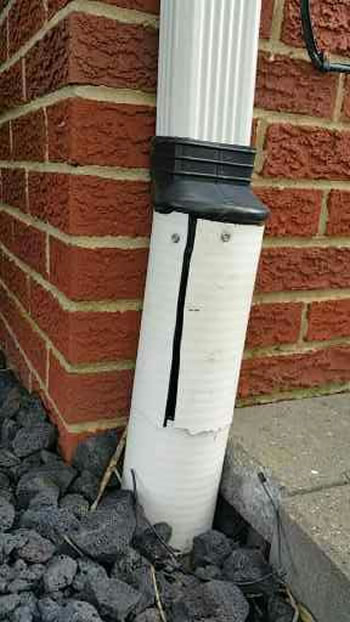
Underground Downspout
Most of the time a homeowner wants their downspouts ran underground because the 4 Ft. aluminum extension keeps blowing off into the neighbors’ yard or the lawn equipment keeps crushing the aluminum extension. The extensions can create ice on walkways and driveways. They also can be a liability by being a trip hazard in some incidents. But what is most important in having the downspouts ran underground is to take the roof water and directing it as far away from the home as possible, to protect your home’s foundation.
What is the Best Downspout Pipe to Use?
Over the past 30 years I’ve seen both homeowners and contractors use a wide variety of materials to move roof water away from the home. All the hard pipe cracks or splits in Michigan’s harsh winter climate. For burying downspouts in Michigan, solid corrugated is the best option. It’s flexible and can be ran in one piece. Do not use perforated pipe for the downspouts. It defeats the purpose. Water leaches through perforated pipe allowing the storm water run-off to soak into the soil next to the homes foundation.
Getting all the roof top water directed as far from the house as possible is in the best interest for protecting your home from water damage. Solid corrugated pipe is the only pipe you should use for plumbing your downspout water away from your home. Winter frost lifts concrete streets, driveways, patios and sidewalks. This is a great example for the need to bury the downspouts with a flexible pipe. As the ground freezes and thaws it shifts moving up and down. A single wall solid corrugated pipe has flexibility so it never cracks or splits.
Winter freeze is another problem. When water freezes, it expands. Hard pipe or smooth wall pipe splits as shown in this picture.
Solid corrugated pipe expands when ice backs up and contracts during the thaw to continue moving unwanted water away from the house. Most homeowners just want to pay to have the downspout ran to the property line on the sides of the house. One of the major sources of water run off near the home is the downspouts. Large volumes of water from the downspouts end up in concentrated areas in your yard and near your home. This will leave tens of thousands of gallons of roof top water to lie trapped in between your home and the neighbor’s home. Always run additional pipe to the front or back (whichever direction is downhill) to direct the water to the city storm drains or wet lands.
Make sure to never tie into a French drain or curtain drain with your downspouts. This will plug the drainage system with debris from the roof and gutters. Run the downspout to a basin or 4” pop up emitter that discharges the water next to the drainage channel. Take the downspout pipe out past any landscape beds. Landscape beds will trap the water damaging your plants and possibly crack your foundation from excessive soul saturation.
Clean the downspout drains once a year to not allow buildup of debris that will result in a plugged pipe. Always cut grass out around basin or pop up emitter to prevent grass from growing over the area of discharge. This should be done once a year as well. This will ensure that your downspout drains will move water with the highest efficiency.
How FDM’s Products Make Downspouts Easier!
Prevents Grass from growing over the discharge area:
Pop Up Emitters with Turf Restrictor Plate
Inline Basins with Turf Restrictor Plate
Keeps debris out of line / easy access to line / vents downspouts for higher flow rate :
Downspout vented cleanout and leaf filter
Everything you need for downspouts all in one kit:





